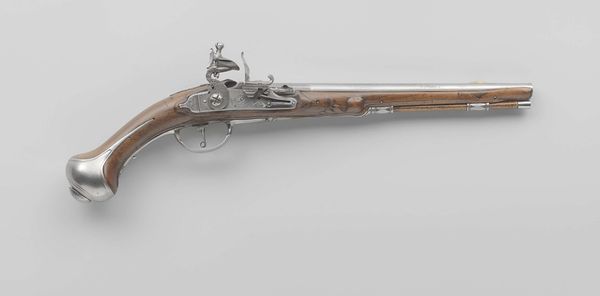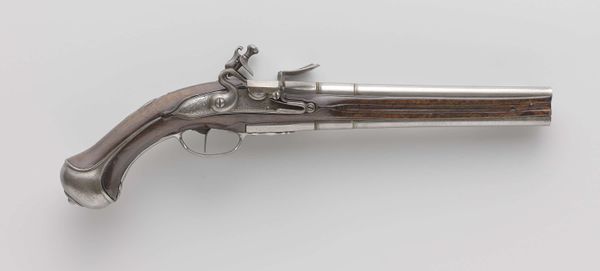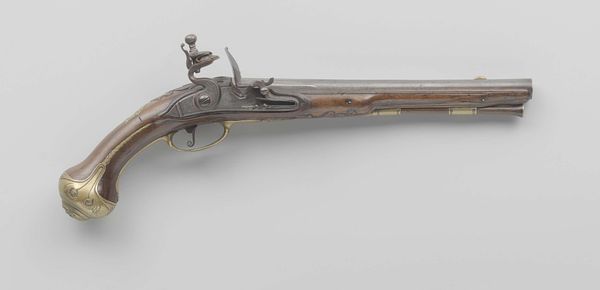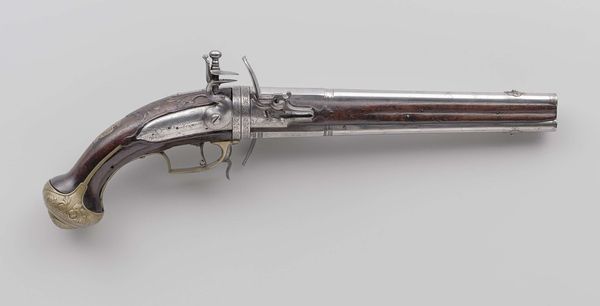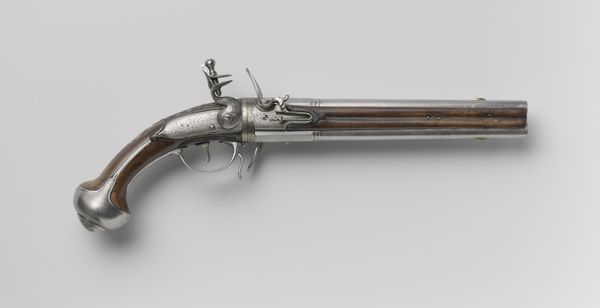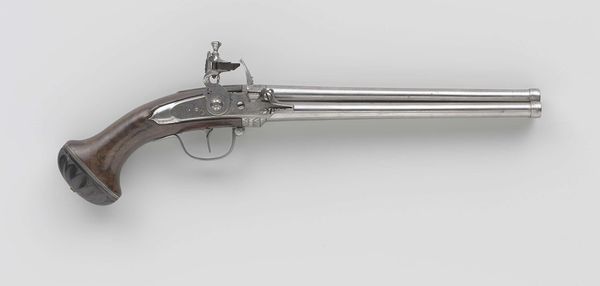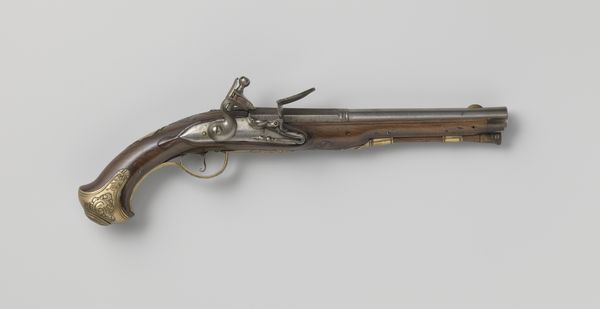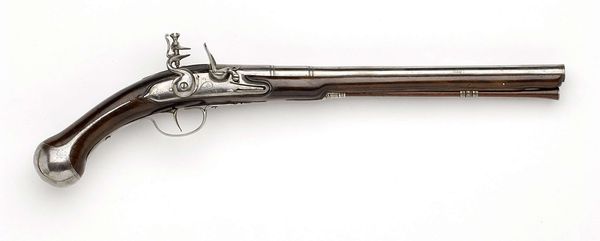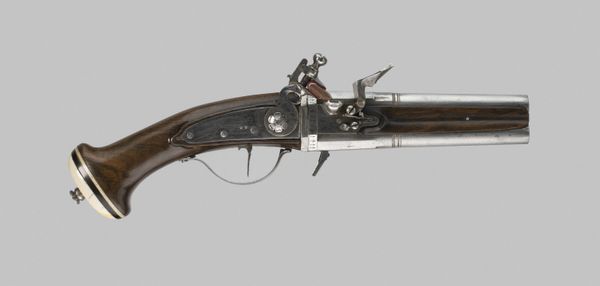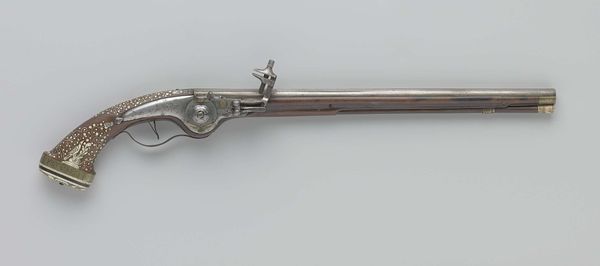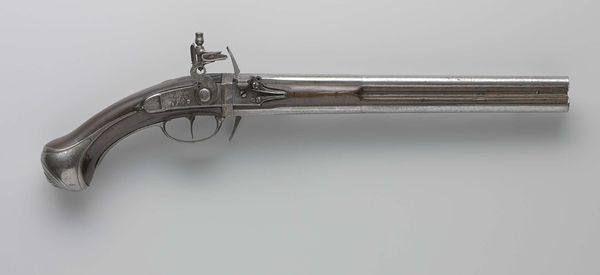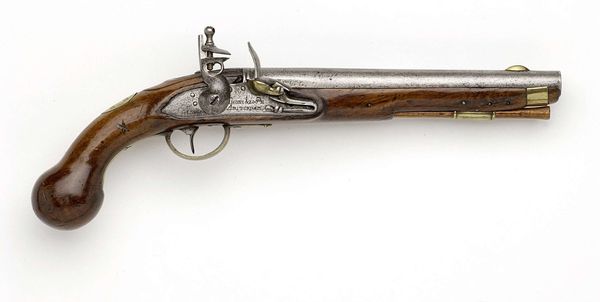
carving, metal, bronze, wood
#
portrait
#
carving
#
baroque
#
metal
#
bronze
#
wood
#
erotic-art
Dimensions: length 50.3 cm, height 17 cm, depth 5.5 cm, length 33.4 cm, diameter 16.3 mm
Copyright: Rijks Museum: Open Domain
Editor: This is a flintlock pistol, dated from 1690 to 1700. It’s crafted from wood and metal, with bronze detailing. The silver inlay creates a striking contrast against the dark wood. It's quite ornate for a weapon, actually. How would you interpret the craftsmanship of this piece? Curator: Well, consider the sheer labor involved. This isn’t simply a functional object; it’s an expression of wealth and power. Think of the social context – who owned it? Who crafted the bronze and silver? This weapon transcends mere utility, doesn't it? Editor: It definitely has a symbolic meaning as well. The detailed carving is quite…provocative, too. Curator: Exactly. What does erotic imagery on a firearm signify? Consider the potential owner. Was it about exerting control, pleasure, or both? It is an object born of colonialism, we must keep in mind. A product made to subdue faraway lands, and it becomes an expression of beauty, how can that not be questioned? Editor: So the materials themselves—the bronze, the wood—speak to more than just aesthetics? Curator: Absolutely! They embody trade routes, exploitation, and power dynamics. Silver wasn’t locally sourced, which illustrates its value to the maker and owner. Every material tells a story, how it came to be placed onto the firearm, the relationship between the gunsmith, and the metalworker and woodcarver. Editor: It's amazing how much context is embedded in the object. Curator: Precisely. It's easy to overlook the materiality, the sheer physicality of creation, when discussing art, but here it feels impossible. We see the social relations of production manifest themselves. Editor: Thanks for opening my eyes to this. Now I look at it and consider the hands that shaped it. Curator: Yes. Art objects, especially weapons, must remind us to ask where the material comes from. It becomes difficult to admire without critique, as you consider the global, historic violence imbued in its production.
Comments
No comments
Be the first to comment and join the conversation on the ultimate creative platform.
